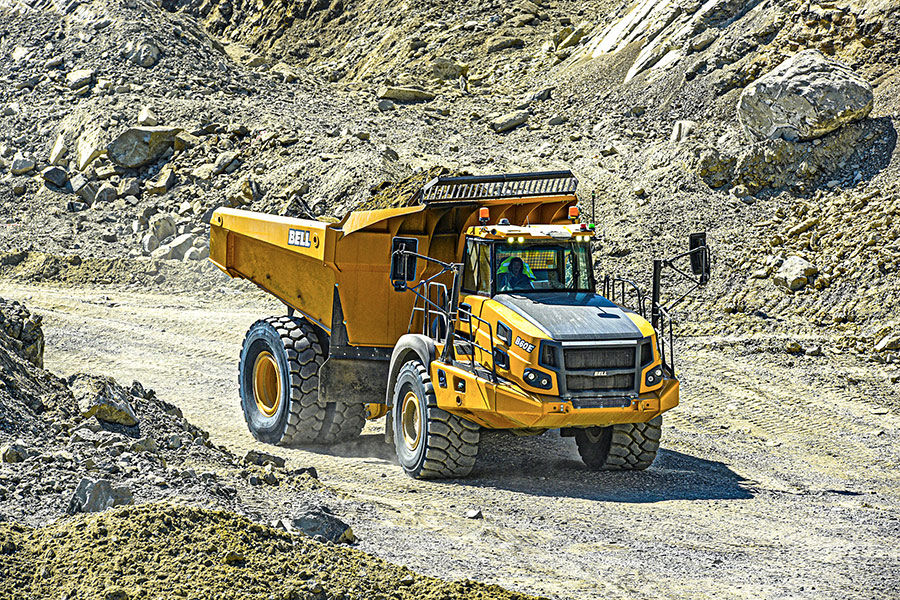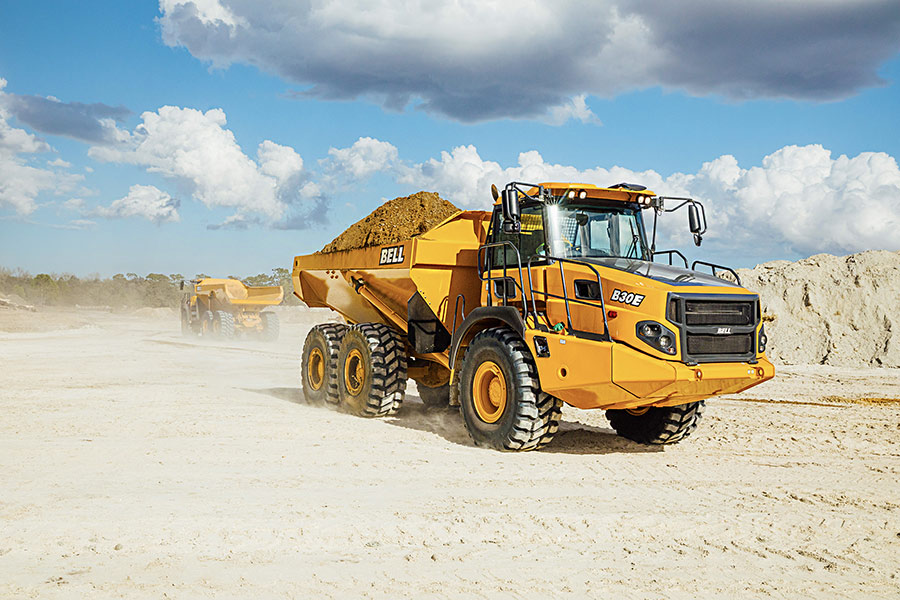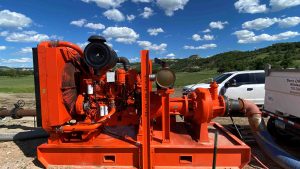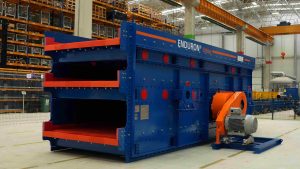The ADT market has seen several technological advancements in recent years. According to Jeremiah Mokhomo, ADT product manager at Bell Equipment, some of the key technological advances that have come to market include telematics, efficient engines and improved safety features.
In 2003 Bell Equipment launched Fleetm@tic® to become the first heavy original equipment manufacturer to offer its customers a fully global remote fleet management system with pole-to-pole coverage.
“ADTs are now equipped with telematics systems that provide real-time information on the location, speed and utilisation of the truck. This helps fleet managers to optimise the use of their assets and reduce operating costs. Bell ADTs are fitted with our proprietary Fleetm@tic® system, which offers real time tracking,” says Mokhomo.
In addition, manufacturers have developed engines that are more fuel-efficient and environmentally friendly, helping fleet owners to not only run profitable operations, but also to reduce the carbon (CO2) footprint of their trucks. To provide context, he says, all large Bell ADTs can operate on hydro-treated vegetable oil (HVO) without needing dilution with diesel or impacting on engine service intervals. HVO can reduce CO2 by up to 90%.
Improved transmission software such as Allison’s FuelSense 2.0 used in Bell machines is key to improved fuel efficiency. The technology uses DynActive Shifting to provide an infinitely variable combination of shift points, thus improving fuel economy by 6% beyond the original FuelSense.
“Given the criticality of running safe operations, ADTs are now equipped with a range of safety features, including cameras, proximity sensors and collision avoidance systems, which help to improve visibility and prevent accidents. Bell ADTs come with onboard weighing and angle sensors, which help to refine our downhill descent system, Hill Assist, and safe tipping,” explains Mokhomo.
With autonomy fast becoming a necessity, Bell ADTs are designed to be platform-agnostic to allow them to be fitted with the autonomous system of the customer’s choice. The company has already completed a proof of concept with Pronto in the US and xtonomy in Europe. The machines use the standard cab, which makes it easy for customers to move the machine to different sites with different systems, or even return to a standard truck when an autonomous contract ends.

Driving efficiency
Driving ADT efficiency has been one of the key design focus areas for all manufacturers. To meet the principal need of efficient operation, Bell has cast the spotlight on engine technology. “Bell uses advanced engine technology that combines high power output with low fuel consumption to deliver improved efficiency. The engines are designed to operate at optimal RPMs, thereby reducing fuel consumption and emissions,” he says.
The company’s weight-optimised design ensures no fuel is used to move unnecessary structural deadweight. Automated functions such as i-Tip automated tipping and operator-selected speed control reduce cycle times and allow operators to concentrate on productivity. Standard onboard weighing allows operators to consistently achieve the targeted payloads while production managers and owners can track production.
In addition, Bell Equipment’s telematics system provides real-time information on the performance and efficiency of the truck. This helps fleet managers to identify areas where improvements can be made and thus optimise the use of the asset.

Critical requirement
In the quarrying and mining space, increased productivity is a critical requirement, stresses Mokhomo. Bell has responded to this need with a range of technological enhancements designed to improve the productivity of its ADTs.
One of the key enhancements is the innovative prognostic capability which has been programmed into the trucks, allowing for identification of issues before they result in costly downtime.
“Full diagnostic capability and a significant increase in vehicle system sensors allows for quick identification of any problems through the easy-to-use colour display,” he says.
In addition, Fleetm@tic® desktop control allows customers to keep an eye on their machines and receive alerts on a wide range of parameters. Daily fluid checks can be done quickly from inside the cab while vehicle sensors keep an eye on systems during operation.
Wet disk braking, standard on trucks from the B30E and larger, means no lost time for service brake pad replacement – even in the muddiest conditions, thus ensuring high truck uptime. Automatic greasing, available on all models, and comprehensive lubrication charts, ensure preventative maintenance is not compromised.
High levels of access to all components ensures any repairs are carried out in the shortest possible time, thus increasing machine availability.

The road ahead
Commenting on the future of the ADT, Mokhomo says the product segment is constantly evolving, and new technological trends will continue to emerge all the time.
“With the increasing focus on sustainability and reduction of carbon emissions, we are likely to see an increased demand for hydrogen-powered ADTs in the future,” he says.
Autonomous operation, he adds, is becoming increasingly popular across many industries, and the ADT market is no exception. “We are likely to see an increase in the number of ADTs that are capable of performing tasks without human intervention, improving efficiency and reducing operating costs. Bell is already active in this space, making our ADTs among the most advanced in the market today,” says Mokhomo.
Telematics systems, he adds, are becoming more sophisticated, providing real-time information on the performance and efficiency of the truck. “In the future, we are likely to see the development of predictive analytics and machine-learning capabilities that will help fleet managers to further optimise their assets and reduce operating costs,” he says.

The Bell ADT Versatrucks have become a major player in the mining industry due to their versatility and range of features that make them well-suited for the demanding conditions of the industry. With their ability to operate as water tankers, diesel trucks and service trucks, the Bell ADT Versatruck provides mining and quarrying operations with high levels of flexibility and efficiency.
The in-cab-operated water tankers, in particular, provide mining operations with an efficient way to manage water resources, and the diesel and service trucks provide the support and resources that are necessary to keep mining operations running smoothly. With their powerful engines, advanced material handling capabilities, and improved safety features, the Bell ADT Versatrucks are helping to improve productivity and efficiency in the mining industry.






